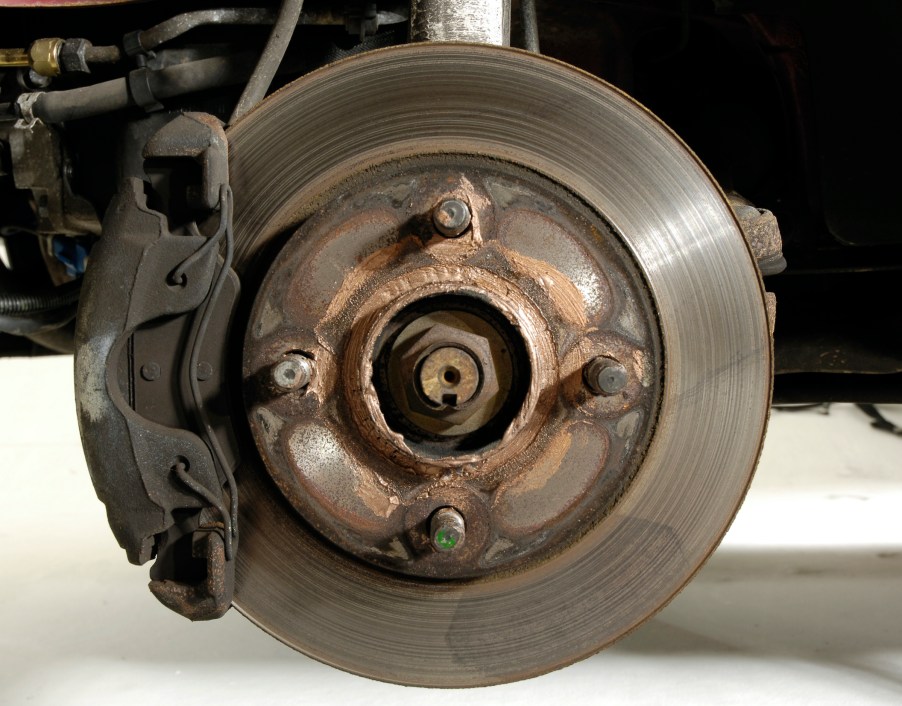
Your Brakes Might Be Worse for the Environment Than Your Exhaust
Depending on which state you live in, you may have been subjected to the state vehicle inspection process. States like California and New York measure the emissions output from your exhaust, much to the chagrin of those of us who like to modify our cars and truck for performance. While keeping our environment clear by regulating emissions is certainly not bad, the environmental agencies may have been overlooking the biggest source of pollution, our brakes.
Brakes and tires produce more than 1,000 times the pollutants than the EU allows
According to MotorTrend, we have spent so much time being worried about exhaust we overlooked what might be a worse contributor to pollution, your brakes, and tires. Even the extensive efforts to develop and push EVs won’t save us from this one. How do we get away from brake and tire dust?
MotorTrend found that a popular hatchback (that remains unnamed) with new, appropriately inflated tires had emitted 5.8 grams of particles. This figure represents more than 1,000 times the EU’s 4.5 milligrams that they allow from an exhaust pipe. Unlike exhaust emissions, brake and tire dust particles are difficult to measure and subsequently regulate.
The EVs and hybrid trucks aren’t really helping
In efforts to comply with emissions regulations, EVs and hybrids have taken over the car scene. While these vehicles help with exhaust emissions, they actually make the tire and brake particle emissions worse due to their weight and size. The technology that makes EVs and hybrids work relies on heavy batteries. These vehicles have shown an increase in tire and brake wear. Weight has a profound effect on how tires and brakes hold up. The more weight you have to stop, the harder the brakes and tires have to work, creating more wear and producing more particles. Whomp whomp.
Luckily there is an answer to this pollution problem–and it looks, killer
Cleaning your wheels and fresh mirror-finished disc brakes have proven to help. The Porsche Cayenne Turbo introduced this new way of making rotors that increases the life of brakes. Porsche calls this equipment Porsche Surface Contol Brakes. This bit is pretty science-heavy so strap in.
MotorTrend explains that the standard gray cast-iron rotor gets a thermal spray, which is a process called high-velocity oxygen fuel coating (HVOF). HVOF requires igniting a fuel and oxygen mixture, forcing the gas byproduct out of a nozzle at supersonic speeds. Whoa. Then tungsten carbide gets added to this stream, partially melts, and deposits on the rotor. This mind-melting process makes a “dense, 0.1 mm thick, low-porosity coating with extremely high bond strength.” The result is a beautiful mirror finish that never rusts.
Stopping brake dust pollution takes a lot of work

The initiative created to curb this problem is called the “Greentive.” As you may have guessed, these special mirror-finished rotors require special brake pads. Brembo, who has also been working to find a solution to the pollution issue, has yet to tell us much about the Greentive brake-pad chemistry. MotorTrend says, “They’re described as mildly ‘adhesive,’ impregnated with microscopic hard particles capable of briefly penetrating the tungsten carbide on a microscopic scale. The low rotor porosity means that the entire pad contacts the rotor, with none of the grooves, pits, or voids that limit friction on standard rotors.”
Will these new brakes be less effective than the old ones?
Porsche seems confident that the PSCB will remain just as effective as older brakes with the added benefit of them making much less brake dust. In fact, to show its confidence, Porsche has set these up with white calipers in a sort of “I dare you to make brake dust” stunt.
The problem with these new brakes is that they are a pricy option. Porsche charges $3,490 for PSCB. That is not a cheap option. If legislation requires this kind of rotor, something will have to be done to keep prices down. Either way, for once, the fix to a pollution problem is something that most gearheads like anyway; shiny rotors.



